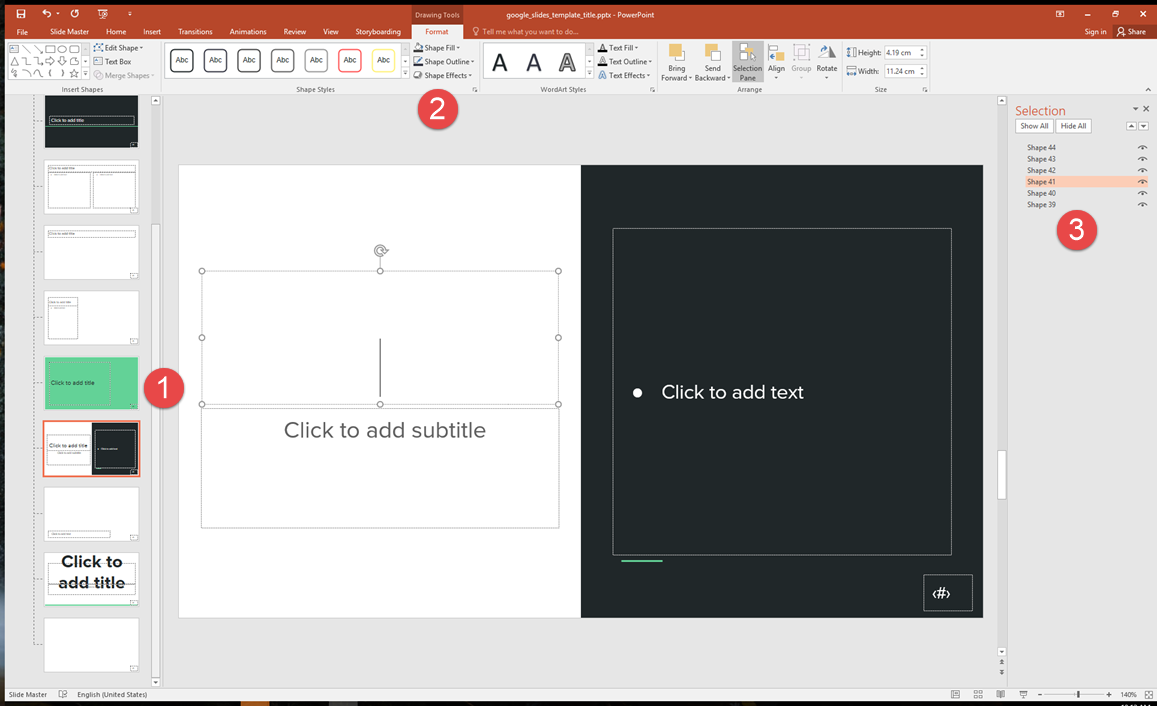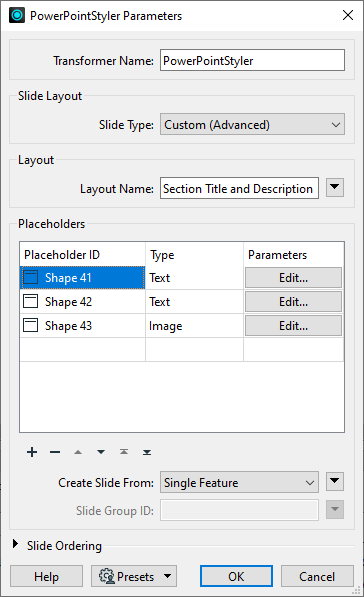FME’s PowerPointStyler transformer contains default slide types that work well with templates generated in Microsoft PowerPoint, or when you're working without a template.
However, in some cases, the PowerPoint writer returns an error message indicating that a required slide layout or placeholder ID is missing. For example:

This can happen if you edited the default slide layouts or used another program to generate the template. When this happens, you can still use your desired template, but you must choose Custom (Advanced) slide type from the PowerPointStyler transformer Slide Layout parameters.
Example: Google Slides Template
The following example uses a template presentation created in Google Slides, then converted to Microsoft PowerPoint.
To place content on a custom slide layout, you must specify the name of the layout as well as the type and an ID for the placeholder (the shape where you would like to place the content) for each piece of content that you would like to include in the slide. Depending on the type of content, other parameters may be required, which can be set by clicking on the Edit… button under the Parameters column for that content’s row.

Access the slide layout and placeholder names

|
Open the PowerPoint template and select the View tab. |

|
Click the Slide Master icon in the Master Views section. From the Slide Master view, you can edit, create, and rename slide layouts for the template presentation. The existing slide layouts are displayed on the left side of the screen, with each placeholder on the layout being displayed as a shape with dotted borders. |

|
The name of each slide layouts will display if you hover the cursor over the layout. You can rename them by right-clicking on the layout and selecting Rename Layout from the menu that appears. |

Locate the names of the placeholders on a slide layout

|
Select any placeholder on that slide. |

|
A new Format tab will appear at the top of your PowerPoint window. |

|
When you click the Selection Pane button inside the Arrange section, a list of all the shapes on that slide will appear on the right edge of the window. |

In the screenshot above, the currently selected shape’s name is highlighted, and you can explore the shape names further either by clicking on other placeholders or on other shape names. You can rename a shape by double-clicking the name in the Selection Pane.
The PowerPointStyler transformer parameters (shown below) allow you to specify content for as many placeholders as you like, and multiple features can write content to the same slide when given the same Slide Group ID. (Note that, although there are different PowerPoint placeholder types for different types of content, FME can place any supported content in any type of placeholder.)

Click OK to close the parameters, then run the workspace.
View the output
Open the output PowerPoint file to view the results:
